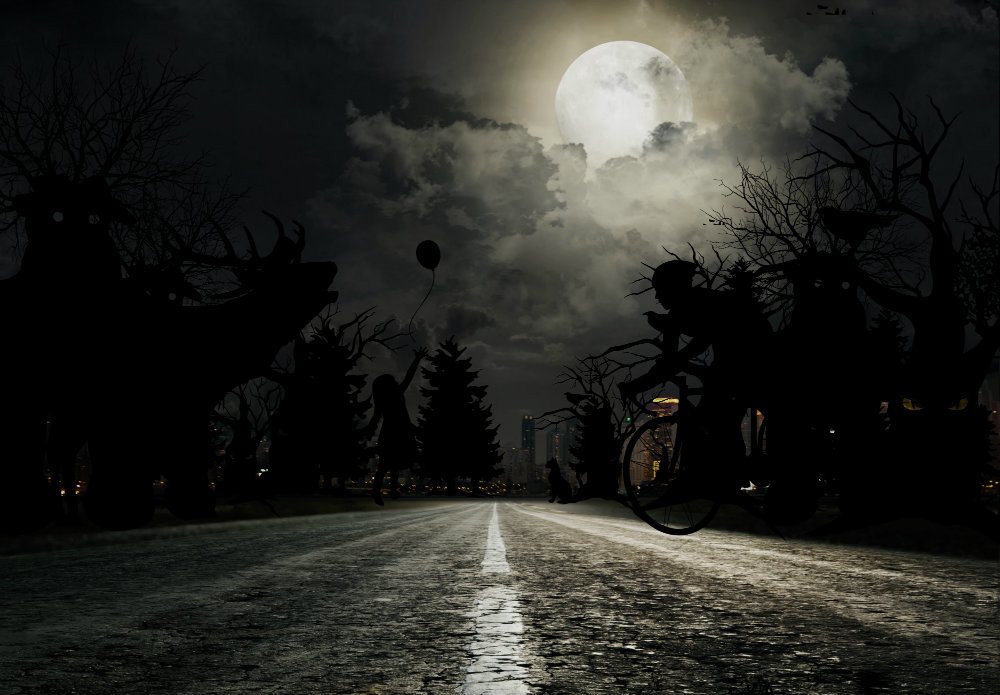Among all those techno goodies like lane departure warning and automatic braking, some are actually capable of helping a driver in ways they cannot help themselves. Ford’s Pedestrian Detection system, for example, aims to help you see in the dark. Well, see pedestrians at night anyway.
Effectively, what we have here is a way to use on-board sensors that are already in place to do other things like look for, sense, and react to wandering pedestrians. In some ways, this strikes me as a good thing.
There are a ton of news stories out there about pedestrians too distracted by their smartphones, wandering obliviously into traffic and getting wham-o-ed into The Great Beyond.
Night Moves
Ford goes into great detail why, in the dark especially, this is not only difficult for even the most attentive drivers to counter, but also plays on the inherent fears built into our primitive brains. Ford says “night fears rooted in our pre-historic past cause stress behind the wheel,” and a new poll shows most people “worry about night blindness and many fear hitting pedestrians.”
And all of that makes sense, especially from a psycho-anthropological standpoint. And that’s Ford’s nice way of saying, “the stuff that scared the jeepers out of our Troglodytic ancestors still scares us.” So, yeah, fear handed down from cavemen causes stress on the road, and so does that Neanderthal in front of me who’s texting and driving at the same time. But that’s an opinion best left for another time.
Survey Says
Ford also points out how nighttime traffic accidents with pedestrians can be almost twice as likely to lead to a fatality. That is, statistically speaking, a pretty big jump. Ergo, it’s a jump worth paying attention to and trying to minimize. Ford surveyed thousands of drivers across Europe (this was a Ford of Europe study) and they found 81 percent admit to being scared on the roads at night. That’s both an impressive number and also noteworthy, considering what it takes to get a driver’s license in Germany. Getting a driver’s license in Germany is on par with getting a pilot’s license here in America. So they train and test the be-jeebers out of you, and “I am scared of driving on the road” is never an acceptable answer on the driver’s education test.
Ford goes on to say that more than half of the survey respondents say poor night vision is a source of stress, and more than a third worry they might be involved in an accident. Worries that they may mow down a pedestrian were mentioned by one in five drivers surveyed.
So, what can a car company do to help?

For Dummies
If you’re Ford, you come up with improved Pedestrian Detection technology that works at night for the first time. After coming up with prototypes, Ford’s development team worked at night, sending life-sized dummies into the path of vehicles on closed tracks. And, c’mon, how much fun was that job? You’re out at the test track at night, you and a bunch of your engineer buddies. Along comes Heinrich, the macho factory test driver, and then you and your engineer buddies go, “Eins! Zwei! Drei!! Los gehts wieder, Dummy!!”
And they pay you to do this? Sign me up.
Anyway, by the end of all this fun and dummy ballistics, Ford is able to, for the first time, introduce new technology that detects pedestrians at night. The system automatically applies the brakes if the driver does not respond to initial warnings.
“We know some drivers find hitting the road at night a stressful experience. Especially driving in towns and cities, pedestrians – sometimes distracted by mobiles – can without warning step into the road, leaving even alert drivers very little time to avoid an accident,” said Gregor Allexi, Active Safety Engineer, Ford of Europe.
And how much do you want to bet that with a name like Gregor Allexi, that guy was in charge airborne dummy deployment?

Advanced Detection Technology
The Pedestrian Detection system processes information from a bumper mounted radar pinger, as well as a windshield mounted camera. Contained within Ford’s on-board computer is a database of “pedestrian shapes” so the car can tell the difference between people and objects, such as trees and road signs. The camera is firing off at 30 “snapshots” a second (which is a TV camera frame rate). This video feed and viewing angle enables the system to distinguish pedestrians, even in low-light conditions, illuminated only by the headlights.
If the system detects a pedestrian before the driver, it first provides audible and visual warnings. Should you be a complete chowderhead and fail to respond, the system automatically hits the brakes for you. Ford will roll out this advanced pedestrian detection technology later this year, when it is introduced on the next generation Fiesta in Europe. In North America, the new technology will debut first on the 2018 Ford Mustang and F-150.
For tips when it comes to nighttime driving, we recommend this advice from the National Safety Council.
Tony Borroz has spent his entire life racing antique and sports cars. He means well, even if he has a bias towards lighter, agile cars rather than big engine muscle cars or family sedans.
Cover Photo & Source: Ford Motor Company.


